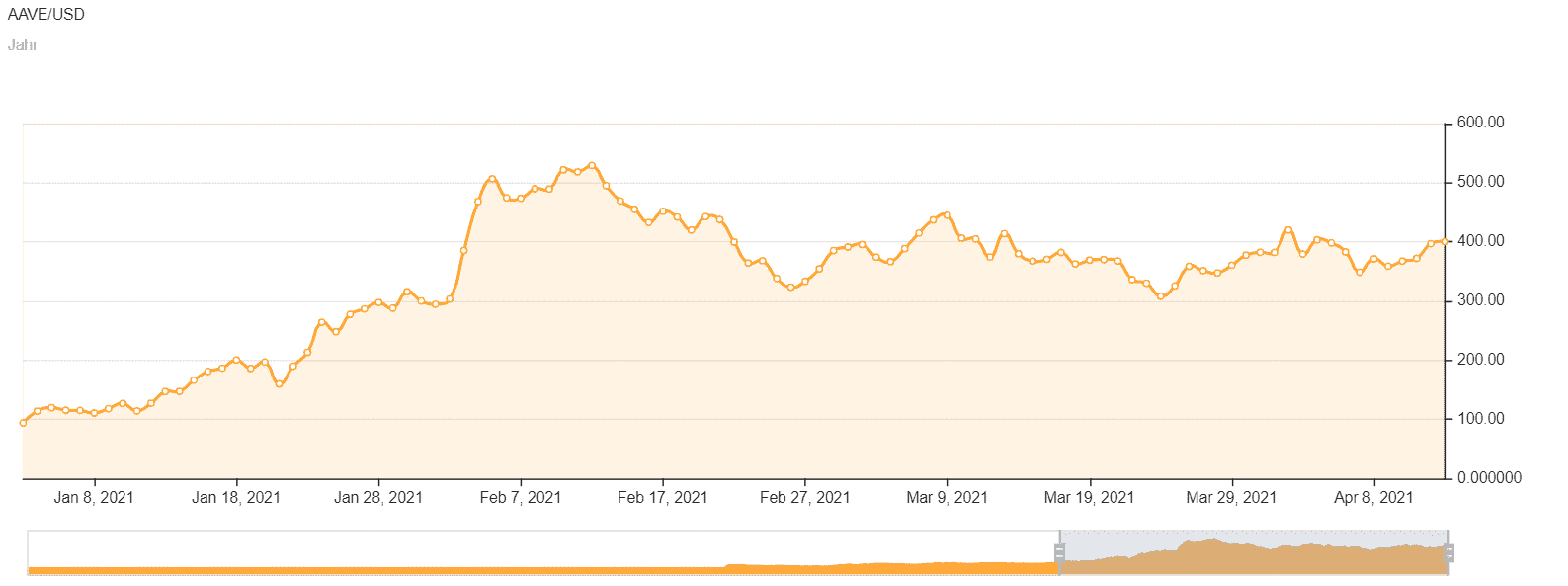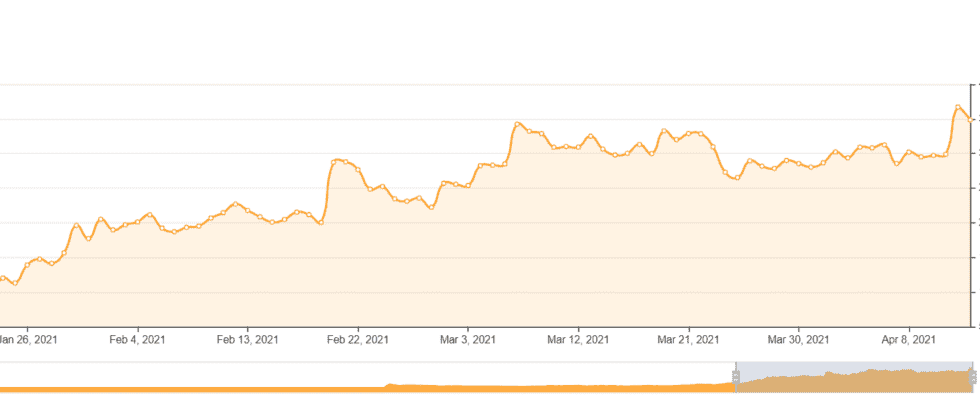Not only Bitcoin and Ripple’s XRP can shine with price gains today. The DeFi-Coins UNI and AAVE also come up with strong daily increases.
On April 12th, UNI, the governance token of the decentralized exchange (DEX) Uniswap, was able to print a new all-time high. At the beginning of the week, the UNI rate rose to USD 37.80. The profit-taking that followed was limited: at the time of going to press, UNI was trading at $ 34.78. With a plus of 12.5 percent, UNI is one of today’s top performers among the Altcoins in a 24-hour comparison.
Uniswap has thus been able to free itself from the sideways trend of the past weeks, at least for the time being. The price targets from the previous altcoin analysis still apply. Should Uniswap manage to regain its all-time high, the next step will be the US $ 49.79 mark.
AAVE makes a new attempt
In addition to Uniswap, the decentralized flash loan protocol Aave is now back to green. The price of AAVE, the governance token of the protocol, also recently hit a new all-time high. On April 1st, the AAVE rate shot to $ 420, but in the first week of April, AAVE slipped back below $ 350.



Now AAVE seems to have recovered. At the time of going to press, AAVE is barely a hair’s breadth below the psychologically significant $ 400 mark. Should the bulls succeed in another attack on the all-time high, the next major resistance will be the $ 460 mark. On the downside, the USD 382 serve as support.
dYdX introduces Uniswap and AAVE
In addition to the recent course records, AAVE and UNI have another fact in common: since April 12, both tokens have been trading on the DeFi platform dYdX. DYdX recently posted this on its blog proclaimed. DYdX is a DEX that enables margin trading and options trading, among other things. To do this, the platform uses zero-knowledge roll-ups, a layer 2 technology for Ethereum that significantly increases transaction throughput.
